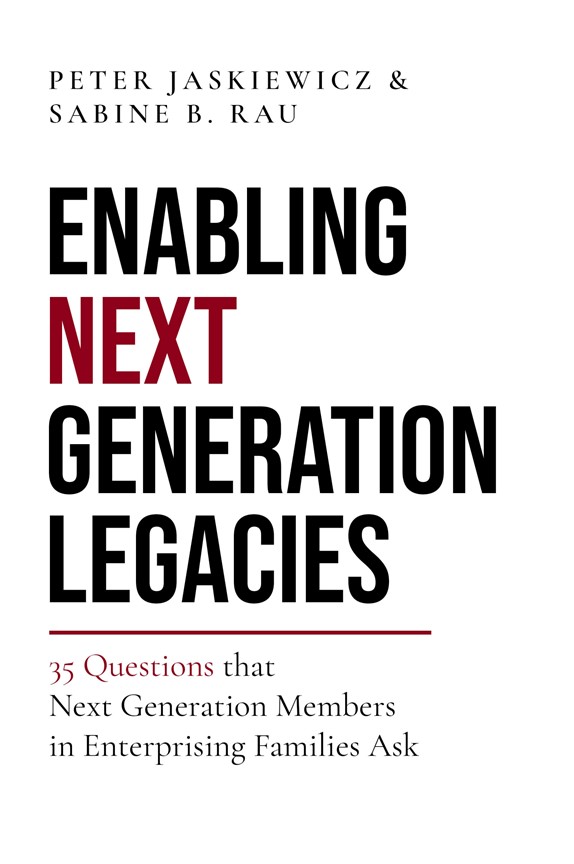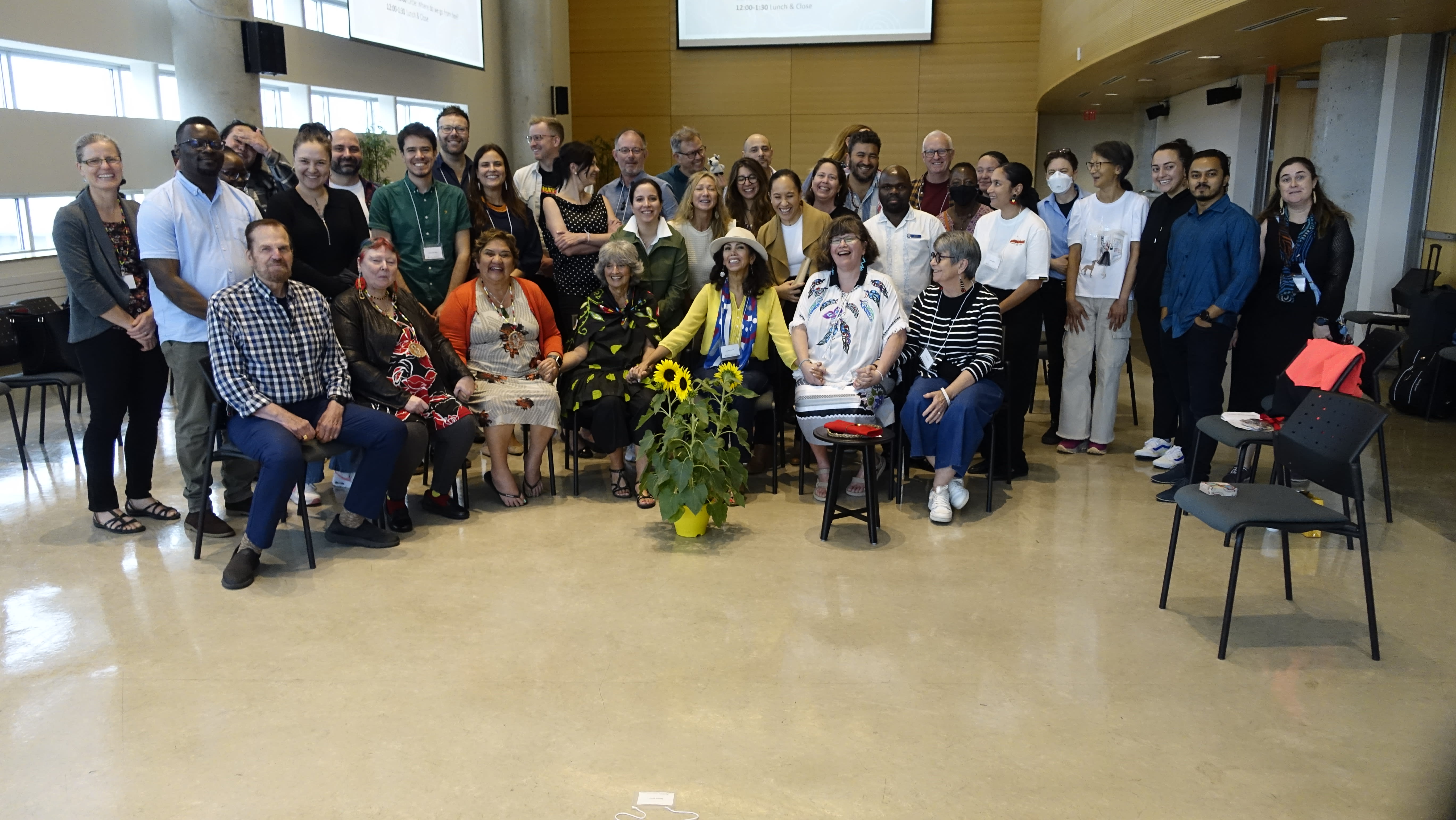The Family Enterprise Legacy Institute has been featuring select parts from the book, Enabling Next Generation Legacies: 35 Questions That Next Generation Members in Enterprising Families Ask.
The result of years of international research and practical experience, Enabling Next Generation Legacies delves into the unique challenges that confront family enterprises.
Telfer professors Peter Jaskiewicz and Sabine Rau have brought together the world’s leading academics, practitioners, and enterprising families to answer the most pressing questions faced by Next Generation members in a short and concise, yet meaningful way.
The book consists of best practices, real-life examples, and additional critical questions for reflection from nearly 100 contributors from 27 different countries. Expert commentaries come from members of the world’s leading family businesses including Auchan (France), Saputo (Canada), and Sabra (Israel), as well as from various academic experts from business schools around the globe like Kellogg, IMD, and INSEAD.
Below, read an expert response to a pressing question raised by Next Generation members.
What Are the Ground Rules Between Nonfamily Executives and Family Members Joining the Family Business?
Response by Pramodita Sharma, U.S.
Mr. Smith, as Carolyn had always known him, had worked at her family’s business since she was a child. A regular visitor to their home, her parents respected him for his competence, wit, and integrity. He seemed to take special interest in her perhaps because she was the oldest of three siblings. He expressed pride when she enrolled in the nation’s top business school. But since she joined the company full time, something seemed different as an awkward unease grew between them. Why?
From infancy, the descendants of an incumbent leader or next generation members develop a sixth sense of being sized up by nonfamily executives working in their family’s business. With time, these inquisitive glances become more piercing as speculations of the descendants’ role and influence on the business grow. Like a frog in tepid water slowly brought to boil, some juniors find it difficult to express their unease or call it out. Others use their position deftly to build collaborations and partnerships of mutual interest with nonfamily executives by embracing three principles or ground rules.
1. Run Slow to Run Faster
When asked how forty-one-year-old William Etti, a lifelong distance runner, improved his marathon time from 5:51 to 3:57 in two years, he explained, “by doing most of my runs at a slow pace my marathon finish time was much faster.” He said that running at a conversational pace with a buddy, with an occasional pause to catch breath, helps to build energy aerobic systems essential for runners’ speed and longevity. Carolyn is well aware that she is bursting with new ideas and eager to make changes that she feels are imperative to the survival and renewal of her family’s well-established business. The running analogy suggests that the important question is not whether or not her ideas should be put into action, but rather the timing and pace of those actions—implementation of change accelerates when the team, particularly established and competent nonfamily professionals like Mr. Smith, bring their best selves to the game. Thus, to accelerate her progress and impact and sustain it for the long-term, she must start slowly and “understand before seeking to be understood.”
2. Reimagine Together

Concerned about the predictions of population growth and food shortages by 2050, Dr. Chris Nelson, a molecular scientist and second-generation member of Kemin Industries in the U.S., personally interviewed 10 percent of Kemin’s entire work force, 200 people, to understand how each sees their company in twenty years. From this exercise, emerged Kemin’s purpose: “to sustainably transform the quality of life of 80% of the world’s population by 2030.” For an individual to be considered sustainably transformed by Kemin, they must consume its products at least five times a day. Such collaborative reimagination helped to direct the collective energies of family and nonfamily members alike, to develop sustainable plant-based materials to accomplish this clearly articulated and measurable goal. Across the Atlantic, in the Netherlands, Marlies van Wijhe, a fourth-generation member of the Royal van Wijhe, a manufacturer of Dutch Paints and Coatings worked closely with family and nonfamily peers and seniors to articulate their aspired goal to ensure that all 10 million buildings in their country would be covered with durable paints made from bio-based renewables using the circular-economy process. Lofty goals like these become achievable because the desire to leave a better world for the next generation is equally shared by family and nonfamily members.
3. Scenic Route to the “Chief” Suite
The Automatic Manufacturing Ltd. (AML) of Hong Kong, designer and manufacturer of industrial automation controls, follows a transparent career development scheme to enhance the entrepreneurial grit and self-efficacy of its Next Gen leaders. In consultation with incumbent family leaders, Next Gens develop an educational and venture creation plan with clearly established and measurable milestones to accomplish over two decades in order to qualify for consideration of any chief-level positions at AML. Close working relationships and mentorships by carefully selected nonfamily executives is an integral part of this training and development plan. For example, supported by the family’s angel investment scheme, juniors work closely with nonfamily executives to establish a new venture independent of AML that is subsequently merged with the parent company after a few years of a successful run. Similar thoughtfully created meandering career development patterns that adroitly weave in close interactions with and mentorship by nonfamily executives is followed by the British luxury leader goods manufacturing Ettinger family, as well as the American Kanfer family that manufactures Purell Hand Sanitizers.
Conclusion
These principles of (1) carefully managed pace and timing of the next generations’ integration in family business, (2) reimagination of the enterprise with nonfamily executives, and (3) a career development plan focused on building necessary capabilities and relationships are yet to be codified into formal training and educational programs. Therefore, they tend to be overlooked in family firms. This amplifies the assumed importance of factors like luck, personality, or wisdom as the drivers of productive and collaborative, performance-enhancing relationships between descendant family members and nonfamily executives. While the transgenerational leadership change is inevitable, the longer career and life spans extend the potential of developing nonreplicable family firm competitive advantages by carefully planning and exploiting the under-appreciated and utilized potential of the “working together” period between next generation family members and senior nonfamily executives.
Pramodita Sharma is the Schlesinger-Grossman Chair of Family Business at the Grossman School of Business, University of Vermont. She served as the editor of Family Business Review from 2008–2017. Her research on succession, governance, innovation, next-generation commitment, entrepreneurial leadership, and sustainability in/by family enterprises is published in over fifty articles and ten books. Since 2015, she has published Entrepreneurs in Every Generation and Patient Capital: The Role of Family Firms in Sustainable Business, and ten articles in journals like Entrepreneurship Theory & Practice, Family Business Review, and Journal of Business Ethics. Pioneering Business Families of Sustainable Development is her most recent book.
Enabling Next Generation Legacies: 35 Questions That Next Generation Members in Enterprising Families Ask is now available in eBook and hardcopy. All royalties from Enabling Next Generation Legacies go towards the University of Ottawa’s Telfer Fund, helping students in need.
To read more about how Telfer is shaping the conversation about the future of family enterprise, visit the Family Enterprise Legacy Institute and subscribe to our newsletter to stay up to date.











